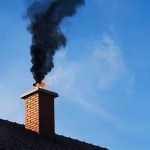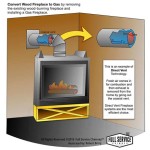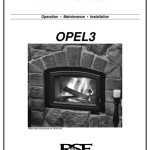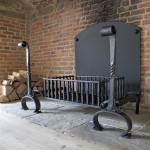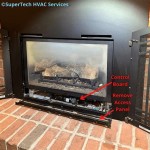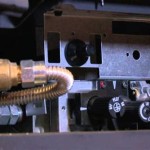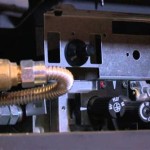Center Stove and Fireplace: A Comprehensive Guide
The terms "center stove" and "fireplace" encompass a broad range of heating appliances used in residential and commercial settings. Understanding the nuances of each category, including their functionality, fuel types, installation requirements, and maintenance needs, is crucial for making informed decisions about home heating solutions. This article provides a detailed overview of center stoves and fireplaces, examining their characteristics and key considerations for prospective buyers.
Understanding Center Stoves: Functionality and Fuel Options
The term "center stove" is often used to describe a freestanding stove positioned centrally in a room. This placement allows for maximum heat distribution and creates a focal point. Stoves primarily function as radiant heaters, emitting heat directly from their surface into the surrounding space. Convection also plays a role, as the heated air rises and circulates within the room. Efficiency, heat output, and fuel type are primary considerations when selecting a center stove.
Wood Stoves: Wood stoves are a traditional heating option, offering a rustic aesthetic and the potential for cost savings if wood is readily available. Modern wood stoves are significantly more efficient than older models, incorporating features such as air wash systems to keep the glass clean and catalytic or non-catalytic combustors to reduce emissions. Wood stoves require a chimney for exhausting combustion gases, and proper installation is essential to prevent fire hazards. The heat output of a wood stove is measured in BTUs (British Thermal Units), and selecting a stove with appropriate BTU output for the space is critical for effective heating. Regular maintenance, including ash removal and chimney cleaning, is necessary for safe and efficient operation.
Pellet Stoves: Pellet stoves burn compressed wood or biomass pellets, offering a more convenient and cleaner-burning alternative to wood stoves. Pellets are automatically fed from a hopper into the combustion chamber, allowing for consistent heat output and reduced maintenance. Pellet stoves also require a venting system, although it is typically smaller and simpler than a traditional chimney. The efficiency of pellet stoves is generally higher than wood stoves, and they produce significantly less smoke and particulate emissions. Pellet stoves require electricity to operate the auger and blower, which can be a disadvantage during power outages. The cost of pellets can fluctuate depending on availability and demand.
Gas Stoves: Gas stoves utilize natural gas or propane as fuel, offering the convenience of on-demand heat and precise temperature control. They are available in a variety of styles, including freestanding models, fireplace inserts, and direct-vent units. Gas stoves are relatively clean-burning and require minimal maintenance compared to wood and pellet stoves. Venting options include direct-vent, B-vent, and vent-free models. Direct-vent stoves are considered the safest option, as they draw combustion air from outside the building and exhaust gases directly outdoors. Vent-free stoves do not require venting, but they can reduce indoor air quality and are not permitted in some jurisdictions. Gas stoves require a gas line connection, and professional installation is essential.
Electric Stoves: Electric stoves provide a simple and convenient heating solution, requiring only an electrical outlet for operation. They do not produce any emissions and are relatively easy to install and maintain. Electric stoves typically use radiant or convection heating elements to warm the air. While electric stoves are convenient, they are generally less efficient than other types of stoves and can be more expensive to operate in areas with high electricity costs. They are often used as supplemental heating sources rather than primary heating systems.
Fireplaces: Aesthetics, Functionality, and Fuel Considerations
Fireplaces are traditionally designed as architectural features that provide both aesthetic appeal and supplemental heat. They typically consist of a firebox, a chimney for venting combustion gases, and a decorative surround or mantel. Fireplaces can be constructed from a variety of materials, including brick, stone, concrete, and metal. Their functionality can vary significantly depending on the design and fuel type.
Wood-Burning Fireplaces: Wood-burning fireplaces offer a classic aesthetic and the ambiance of a real fire. However, they are generally less efficient than wood stoves, with a significant portion of the heat escaping up the chimney. Traditional open fireplaces can actually draw heat from the room, creating a net loss of energy. Modern wood-burning fireplaces often incorporate features such as tight-fitting doors and air inlets to improve efficiency. A well-maintained chimney is crucial for safe operation. Wood-burning fireplaces require a readily available source of firewood and regular cleaning to remove ash and creosote.
Gas Fireplaces: Gas fireplaces provide the convenience of instant heat and adjustable flame settings. They are available in a wide range of styles, from traditional to contemporary, and can be installed in new construction or as retrofits into existing fireplaces. Gas fireplaces can be vented or vent-free. Vented gas fireplaces require a chimney or vent pipe to exhaust combustion gases, while vent-free models do not. As mentioned earlier, direct-vent gas fireplaces are considered the safest option. Gas fireplaces offer a clean-burning alternative to wood-burning fireplaces and require minimal maintenance.
Electric Fireplaces: Electric fireplaces offer a simple and versatile heating solution, replicating the appearance of a real fire without the need for venting or fuel. They typically use LED lights to create realistic flame effects and a heating element to warm the air. Electric fireplaces can be installed virtually anywhere with an electrical outlet and are available in a variety of styles, including freestanding units, wall-mounted units, and fireplace inserts. While they provide supplemental heat and aesthetic appeal, they are generally less efficient than other types of fireplaces and are best suited for smaller spaces.
Installation and Maintenance: Key Considerations for Stoves and Fireplaces
Proper installation is paramount for the safe and efficient operation of both center stoves and fireplaces. Incorrect installation can lead to fire hazards, carbon monoxide poisoning, and reduced heating performance. It is essential to consult with qualified professionals to ensure that the chosen appliance is installed according to manufacturer's specifications and local building codes. Factors to consider during installation include chimney or venting requirements, clearances to combustible materials, and proper grounding.
Chimney and Venting Requirements: Stoves and fireplaces that burn wood, pellets, or gas require a chimney or venting system to exhaust combustion gases safely. The chimney or vent must be properly sized and constructed to ensure adequate draft and prevent the buildup of creosote or other harmful substances. Regular chimney inspections and cleaning are essential to prevent blockages and reduce the risk of chimney fires. The type of venting required depends on the fuel type and the appliance's design. Direct-vent systems are generally considered the safest option, as they draw combustion air from outside the building.
Clearances to Combustible Materials: Stoves and fireplaces generate significant heat, and it is crucial to maintain adequate clearances to combustible materials such as walls, furniture, and draperies. Manufacturer's specifications typically provide minimum clearance requirements. Heat shields can be used to reduce clearances and protect surrounding materials. Failure to maintain proper clearances can lead to overheating and potentially cause a fire.
Maintenance: Regular maintenance is essential for the long-term performance and safety of stoves and fireplaces. Wood stoves and fireplaces require regular ash removal and chimney cleaning. Pellet stoves require periodic cleaning of the hopper and combustion chamber. Gas stoves and fireplaces should be inspected annually by a qualified technician to ensure that the burners, gas lines, and venting system are in good working order. Electric fireplaces require minimal maintenance, but it is important to keep the heating elements clean and free of dust.
Selecting the right center stove or fireplace requires careful consideration of factors such as fuel availability, heating needs, aesthetic preferences, and budget. Consulting with experienced professionals and researching available options is crucial for making an informed decision. Proper installation and regular maintenance are essential for ensuring the safe and efficient operation of the chosen appliance. By understanding the characteristics and requirements of different types of stoves and fireplaces, homeowners can create a comfortable and inviting living space while minimizing the risk of fire hazards and maximizing energy efficiency.

Contact Center Stove Fireplace

Galleries Center Stove Fireplace

Corner Wood Stove Mantel Decor Home Fireplace Burning Stoves Living Room

News Archives Center Stove Fireplace

17 Off Center Fireplace Ideas That Will Enhance Your Space Wood Burning Stoves Living Room

Center Stove Fireplace 26220 Executive Sq Richland Wisconsin Services Phone Number Yelp

Fireside Stove And Fireplace Center Offering Wood Stoves Gas Pellet Fireplaces Inserts Chimney Liners Accessories Located In Auburn Maine

Services Center Stove Fireplace

About Wood Stove Fireplace Center

Milroy Street House Complete Overhaul Of An Edwardian Home Fireplace Design

